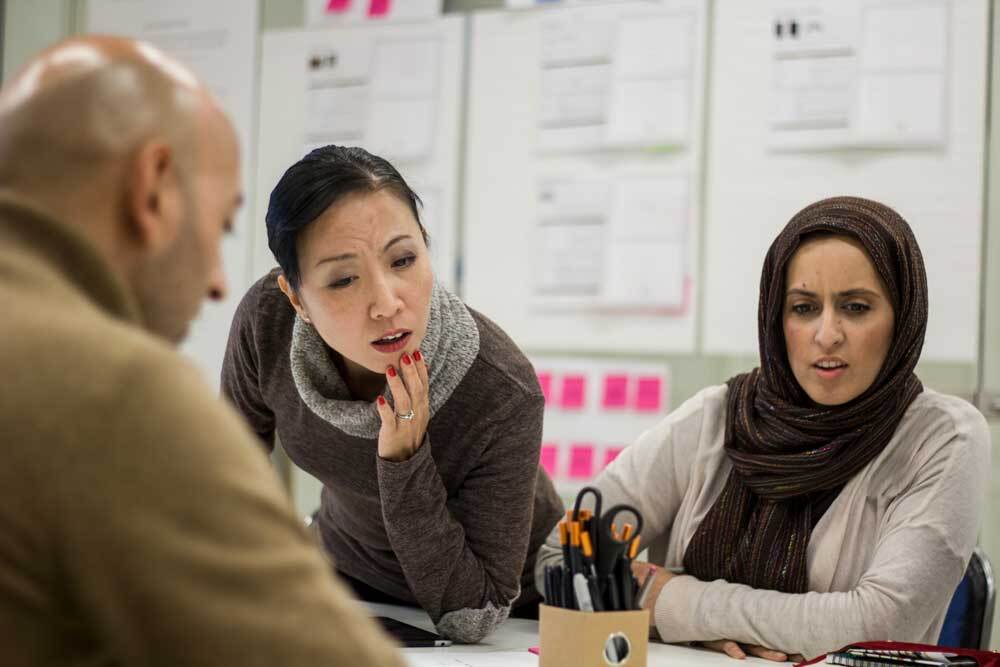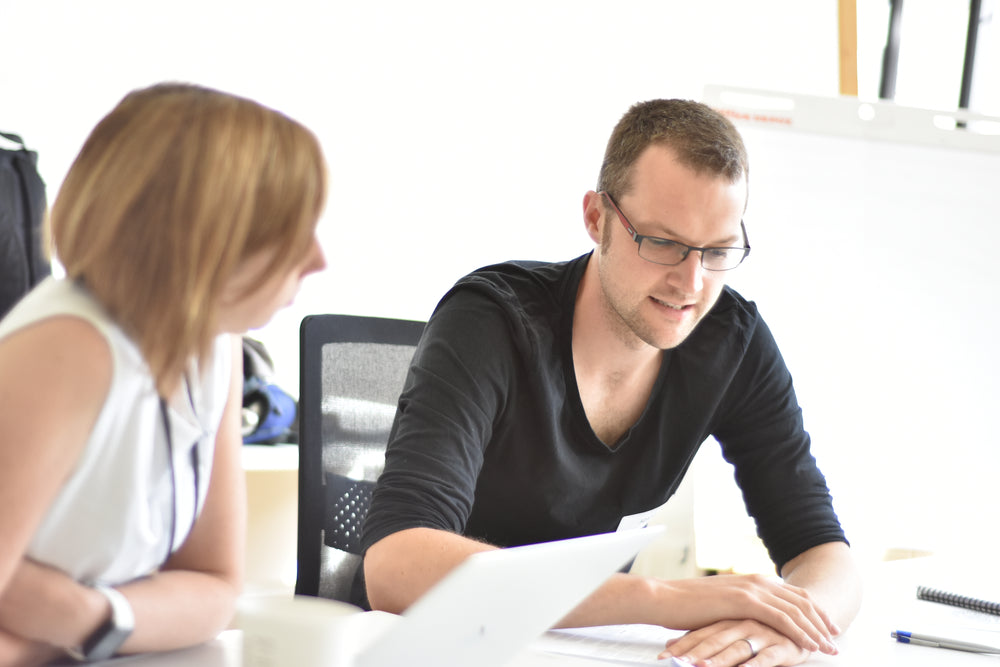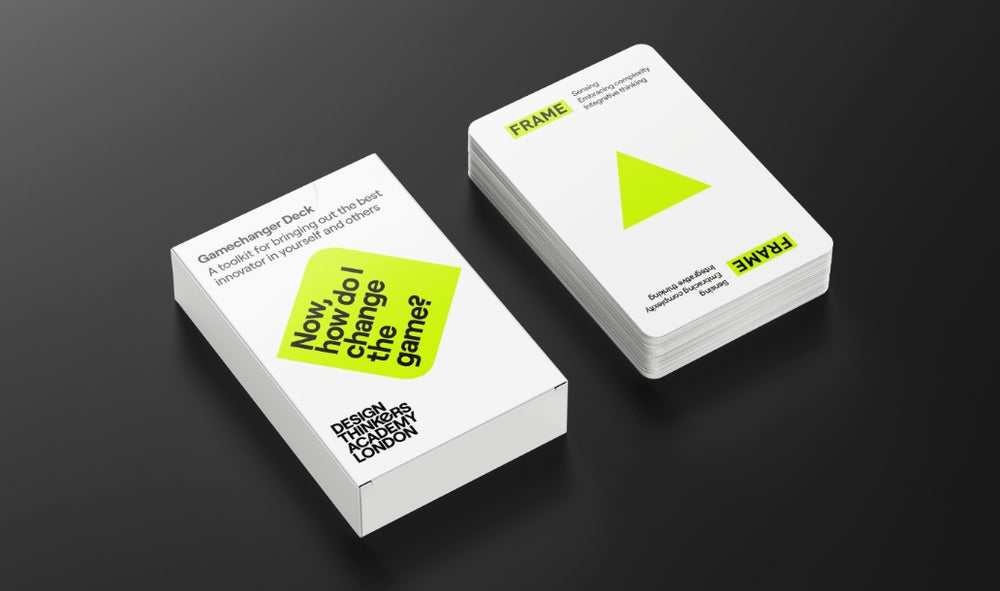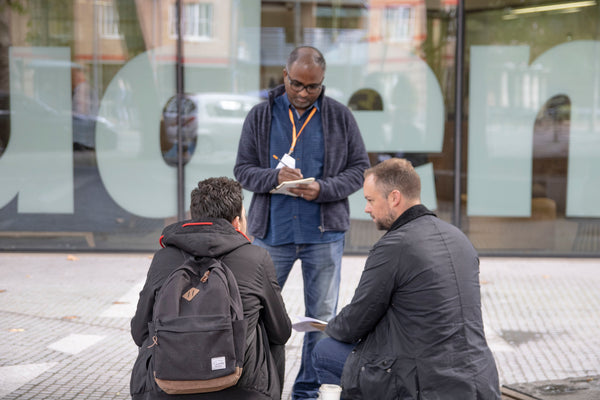Design thinking is a human-centred, problem solving approach that can transform the way you work and the way your business operates.

A recent McKinsey study showed that over a 5 year period, companies who were most skilled at implementing design principles achieved 32% more revenue and 52% more returns to shareholders than their less skilled counterparts. Design thinking can be an incredibly effective way to tackle challenges in your organisation, as well as broader social challenges.
Let’s take a quick look at what design thinking is and where it is already having an impact. We’ll touch on 7 ways design thinking skills can add value to you, no matter what industry you work in. All of these things you can learn on our various design thinking courses, including our Online FastTrack Design Thinking course, getting you up and running in record time – with both in-person and online courses available.
What is design thinking?
Design thinking is a human-centred problem solving approach that takes you from a broad challenge to a solution.
In practical terms, it is a set of tools and methodologies that you can use to tackle social or commercial challenges.
At Design Thinkers Academy London, we follow a 4 stage process called the Double Diamond (see below).
The main idea is that by understanding your end users you can innovate services, products and experiences tailored to them.
You can create outcomes that truly serve & delight the people they were made for.
The four phases of the Double Diamond

Discover: This phase is about gathering insight. You explore the subject matter, research the challenge area and empathise with end users. This stage of the Double Diamond is all about collecting insights and widening your perspective.
Define: Next, you drill down, filter those insights and select a problem to solve that aligns with your customer’s needs and your organisation’s end goals. You hone in and frame a brief.
Develop: This phase involves widening back out again and dreaming up possible solutions. Ideally, a diverse group of people work together to generate ideas. You repeatedly test and refine ideas with a view to creating a prototype.
Deliver: This is where the final testing of your solutions happens and you present the solution as well as a plan for delivery. Some projects may be pitched to your internal organisation while others could be launched directly to the public.
Now that we’ve briefly looked at what design thinking is, let’s get an idea of its use cases.
Design thinking in action
A quick glance at the image below shows just how many different types of organisations have successfully used design thinking to tackle their challenges.

Examples of brands who have adopted design thinking to solve problems and/or embedded design into their culture
- In their early days, Airbnb embraced iterative experimentation to double profit within a week.
- Procter & Gamble dug deep into the discovery phase to find a new opportunity. After this they famously reinvented the Oil of Olay brand in the 90s.
- A Massachusetts school teacher introduced her 6 and 7 year old students to Design Thinking and they embraced empathy to make meaningful changes at school.
There are countless other examples of where design thinking has been used by charities, museums, consulting firms and in digital transformation.
This list could go on for a while but the take home point here, is that:
Design thinking is a widely applicable approach that can be used to tackle a variety of challenges across most industries.
Now that we’ve touched on what it is and how it can be used, let’s jump into the 7 ways design thinking skills can transform your approach to your work.
1. Learn to challenge your assumptions to find opportunities
Very often when we experience challenges in our work, we look for solutions based on what we see and know to be true. Design thinking invites us to explore the problem space to see what is outside of our field of vision.
Example: Procter & Gamble
In the 1990s Procter & Gamble were facing a challenge with the Oil of Olay brand. They were losing market share and their main customers (women aged 50+) didn’t want to pay premium prices for skin care.
So, they had 3 options: rebrand, create a new brand or buy an existing competitor brand.
They explored the problem space and discovered that a group of their non-customers (people totally outside of their market) had a very different approach to investing in skin care.
Women in their mid 30s were seeing the first signs of ageing and investing heavily in products that they used multiple times a day.
If P&G had simply solved the problem as they saw it, they may have looked at how to make the product more cheaply to serve the 50+ audience. They may have lowered their prices or dug into their pockets to buy a new brand. Instead, they rebranded, shifted their target audience and claimed a sizeable share of their new market.
They found an opportunity by opening their eyes and ears.
2. Make better products, services & experiences
Design thinking is all about being human-centred. You spend time talking to your users, mapping their journeys and uncovering their pains and desires. Once you’ve done this, you can start to create solutions that truly cater to their needs.
Co-creation can be key here. By bringing users (and stakeholders) into the process of creating a new product or service, you have the chance to get real time feedback and to fine tune your offerings to your user.
Example: The UN
The United Nations Development Program partnered with the city of Makassar in Indonesia to tackle traffic congestion. The Mayor wanted to lower the number of motorbikes on the street by encouraging the use of public transport. During a 3 day Design Thinking workshop, the 33 participants took to the street to get citizen feedback. They tested their solutions, refined their ideas and came up with a new proposition:
A more high tech minivan that used GPS to make the service more reliable. The minivans would have Wifi and air-con to make the travel experience convenient, reliable and preferable to owning a motorbike.
By engaging end users and inviting a diverse group of key participants, they were able to come up with a more desirable and convenient service which also met their goal of reducing traffic congestion.
3. Save time developing solutions
An IBM study revealed that design thinking could be used to get products to market twice as fast and reducing the development time by 75%.
Here’s why:
Key stakeholders and end users are brought into the design process, so critique is baked in from the start.
If everyone that could potentially have an objection to your solution has been hands on during the design process, there’s less chance of friction later. Additionally, exposing your solution to end user feedback early, means you don’t waste time developing ideas that aren’t robust.

4. Save money
Taking time to empathise with and learn about your end users means you spend less time and effort developing unwanted or flawed solutions. By engaging them throughout the process, you will have your solution tested, (possibly) shredded, refined and improved. Less time wasted and less money wasted getting things wrong.
5. Learn to generate new ideas FAST
This is probably one of the most empowering phases in the design thinking process.
With the right prompts and techniques, ideas flow fast. Collaborating with others that think differently has a compounding effect on the speed of innovation. This phase is fun but it also unlocks some of the most incredible ideas you never knew you had.
6. Build brand loyalty & brand equity
When you consistently create things that delight your end users, you begin to build a reputation as an organisation that “hits the mark”. (Think Apple). You can also begin to operate in the space where your organisation’s values overlap with the values that your end user has.
You’ve taken time to learn about them and eventually your organisation will start to matter to them – far beyond the simple functionality of your products or services.
7. Build a happier, more productive team
Joe Ferry is the former Head of Design at Virgin Atlantic Airways and also one of the coaches on our 5 day Design Thinkers Bootcamp. At our Bootcamp Joe discusses his time at Virgin and explains how along with inventing an award-winning Upper Class seat, they had also invested time designing the internal culture of the company as well.
Training areas for office staff and check-in areas for cabin crew were designed in line with the upper class lounge experience. They wanted staff to feel like they were a part of something and to be proud of being associated with something amazing.
They embedded their brand values into the team experience.
When you turn the lens inward and design a working experience that caters to the humans that make up your team, you’re likely to get less churn and a happier, more productive team.

Everyone is a designer
No matter what your job title is or the industry that you work in, every single day you are designing something by virtue of the choices you make.
When you create a new marketing campaign, re-structure your team or a launch a new product, you are making decisions with a particular purpose in mind. You are designing.
We are not all skilled professionals but we are all designers in some shape or form.
Sharpening these skills and harnessing them in your organisation (and even in your life) can be invaluable.










